News
Futures of the World’s Largest F-16 Operators: Why These Six Fleets All Field Close to 200 Falcons
Entering service in the U.S. Air Force in 1978, the F-16 Fighting Falcon was developed as a lighter and cheaper counterpart to America’s top air superiority fighter the F-15 Eagle. Acquisitions of the aircraft allowed the service to phase out third generation fighters like the Vietnam War era F-4E Phantom more quickly and on a wider scale in ways the unaffordable F-15 could not, and were thus key to bringing large numbers of squadrons up to a fourth generation standard. Produced on a greater scale than any other fighter of its generation, by the beginning of 1988 the F-16 had already formed 24 frontline squadrons within the U.S. Air Force and multiple further training units. An estimated 1300 aircraft were in service, with hundreds more by then fielded by clients across NATO and the wider world. The F-16 was prized for its low maintenance needs and operational costs, compared not only to the F-15 but also the F-4 from the previous generation, as well as a respectable endurance for a fighter of its size and the ability to manoeuvre and reach speeds that were seldom seen on single engine aircraft. Although designed primarily for air to air combat, the F-16 would see relatively little use in such roles due largely to concerns that the aircraft was outmatched by Soviet fighters of its generation such as the MiG-29, and closely matched even by higher end third generation Soviet jets like the MiG-23MLD and MiG-25PD. This resulted in the U.S. and allied Israel relying heavily on the higher end F-15 to counter challenges in the air.

The F-16 managed to retain its position as the world’s most widely used fourth generation fighter largely due to the collapse of the Warsaw Pact and disintegration of the Soviet Union, which stripped the rival MiG-29 of its client base and quickly ended the massive production scale that had been sustained throughout the 1980s. The American fighter proved highly popular on export markets due to its very low cost, with enhanced variants still in production today for countries that for political reasons have been denied access to its fifth generation successor the F-35. The F-16’s much greater reliability, combat readiness and lower lifetime costs have made it a somewhat attractive option despite what is seen to be its growing obsolescence. With the U.S. Air Force having stopped acquiring F-16s in 2005, and currently retiring the aircraft, a growing number of sources have claimed that the F-16 is obsolete for combat against advanced adversaries. USAF Combat Command Chief General Mike Hostage predicted that the aircraft would be obsolete by 2024, while Singaporean Defence Minister Ng Eng Hen put the date at 2030. While F-16s are expected to continue being phased out of higher end air forces, the class remains by far the most widely used among Western combat jets. Due to the sheer numbers acquired by many clients, and to delays acquiring successors for financial or political reasons, or in more cases due to issues and delays in the F-35 program, phasing F-16s completely out of service in the near or medium term is not a viable prospect.
Among F-16 operators six air services field very large fleets of close to 200 or more aircraft, with their acquisition processes and histories operating the fighters and likely plans for phasing them out differing significantly. A look at all six of the F-16’s leading operators and the expected futures of their fleets provides important insight into the fighter class’ future:
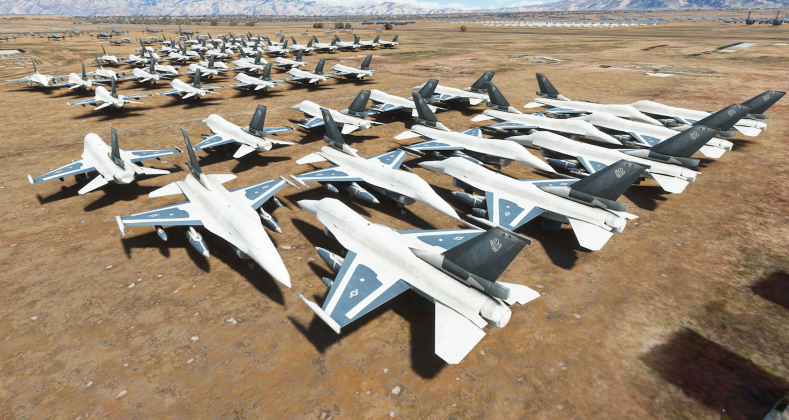
United States Air Force: 511 F-16s
Despite having cut numbers sharply to a fraction of prior levels, and acquired no new aircraft for over 18 years, the United States Air Force remains by far the largest operator of the F-16 with an estimated 511 aircraft thought to be in service at the beginning of 2023 – 410 F-16C single seaters and 91 F-16D twin seaters. It is expected that the F-16 fleet will contract less rapidly in 2023 than in prior years due primarily to issues with F-35 production, which means that the Air Force is unlikely to receive the initially planned 48 F-35 airframes for the year. The Air Force has cut planned F-35 acquisitions from 110 new aircraft per year to 80, then 60, and finally just 48, with even this much reduced figure unlikely to be met in 2023. The result is that F-16s will remain in service for significantly longer than planned and well into the 2030s, with delays to the F-35’s service entry since its first flight in 2000, and even greater delays reaching a full operational capability, increasing reliance on old F-16s significantly. Issues with the F-35 have been serious enough that the Pentagon in early 2021 was confirmed to be considering acquiring enhanced F-16s, or a close derivative of the design, and cutting orders for F-35s. F-16s are highly unlikely to be deployed for high intensity combat other than in supporting roles or in a conflict’s later stages after enemy fleets and air defences are worn down, with even medium and lower end Chinese and Russian fighters such as the J-10C and Su-30SM having very distinct advantages over the old Falcons. With the U.S. Air Force’s F-35 fleet currently numbering approximately 350 fighters, not only is the fleet expected to be outnumbered by J-20 fifth generation fighters from China’s own Air Force as early as 2025, but it will also likely take until 2026 at the very earliest before F-35s outnumber F-16s.
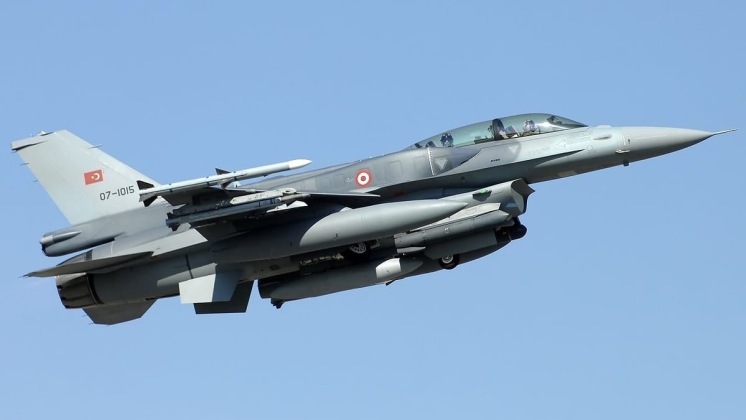
Turkish Air Force: 260 F-16s
The second largest operator of the F-16, the Turkish Air Force deploys eight squadrons of the aircraft which represent effectively its entire fighting strength other than a single unit of ageing F-4s. 260 F-16s are thought to currently be in service, although none are from more production blocks variants and all use effectively obsolete mechanically scanned array radars rather than phased array radars. This leaves the Turkish fleet at a distinct qualitative advantage against the top fighters of most of its neighbours, from Russian Su-35s and Syrian MiG-29SMTs to Greek Rafales and soon Greek F-35s. Turkey has struggled to phase even its F-4s out of service, let alone its F-16s, due to its eviction from the U.S.-led F-35 program in which it was previously a partner in and important contributor to manufacturing. Ankara is currently pressing to be permitted to acquire F-16 Block 70/72 fighters from the United States to replace its F-4s, as well as modern active electronically scanned array radars and avionics suites to modernise some of its increasingly obsolete existing aircraft, although Washington has consistently proven reluctant to allow such a sale. Turkey’s F-16 fleet is further disadvantaged by the very limited range of munitions it has access to with AIM-120C air to air missiles fielded in very small numbers, and older AIM-120B and AIM-7 missiles considered effectively obsolete. Its air to surface arsenal is similarly underwhelming.
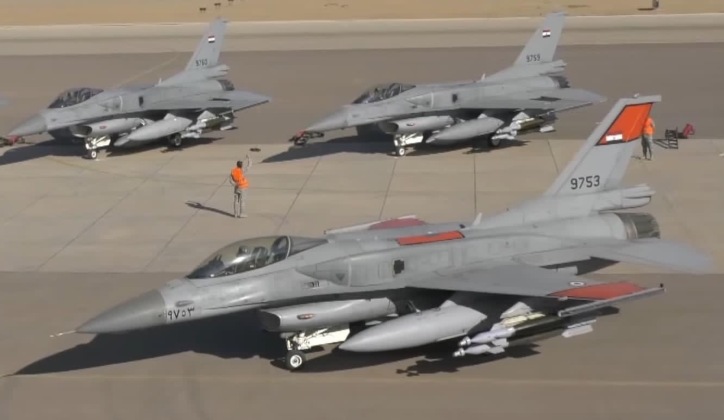
Egyptian Air Force: 207
The Egyptian Air Force acquired its first F-16s in May 1982, with the class forming the backbone of the country’s fleet for the next 40 years and representing almost all acquisitions the Defence Ministry made for the next 30. F-16s today form nine of the country’s sixteen fighter squadrons, with the majority of the remaining aircraft being second and third generation aircraft such as Soviet MiG-21s, Chinese J-7s and French Mirage 5s. Although numerous, Egypt’s F-16s have stood out as among the least capable in the world for multiple reasons, with the aircraft downgraded very significantly with poor avionics, a lack of standoff range air to ground or anti ship weapons, and negligible beyond visual range air to air armaments other than a number of long since obsolete AIM-7 missiles. While Egypt had received some of the USSR’s most capable fighters before its Anwar Sadat administration shifted to form defence ties with the West, as a Western client the arbitrary restrictions put in place in part due to Israeli lobbying in the United States ensured that it would quickly lose its status as a leading combat aviation power. Uniquely among leading clients for the F-16, Egypt had negligible industrial or technological inputs into the aircraft – contrasting sharply with even much smaller operators such as Japan and the United Arab Emirates which saw local industry extensively involved.
A shift in the Egyptian Air Force’s acquisitions policy came only after two consecutive military coups in Cairo brought the administrations of Adly Mansour and Abdul Fattah Al Sisi into power from 2013, which pushed ahead with diversification of arms acquisitions away from the United States resulting in an end to F-16 purchases and acquisitions of French and Russian fighters. Although France, like the United States, has downgraded armaments sold to Egypt including prevuing it from acquiring modern air to air missiles, Russia notably has not with the three MiG-29M squadrons acquired being better equipped than average squadrons in the Russian Air Force itself. Like neighbouring Israel, Egypt has since taken a lead in phasing older F-16 variants out of service, with only 32 F-16A/B models thought to be in service – and the first retired airframe an F-16B placed in a museum in 2018. 175 newer F-16C/D fighters are currently in service, although whether and to what extent these may be modernised remains uncertain.
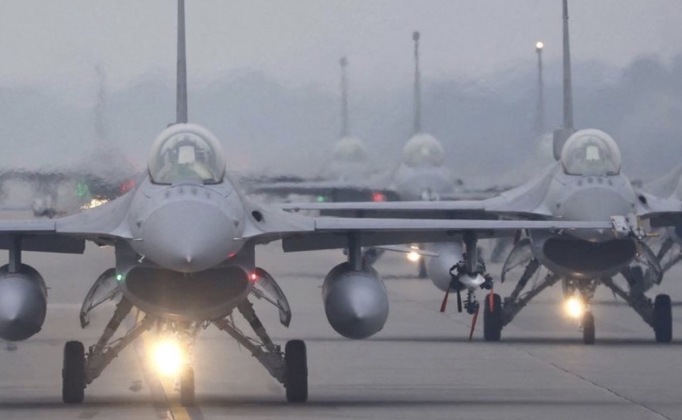
Republic of China Air Force: 200 F-16s (Approximately 135 in Service and 66 On Order)
The Republic of China (ROC) Air Force, the official name of the air arm of Taiwan’s armed forces, has by far the largest number of new F-16 orders of any service in the world, and among economically developed American security partners it was the last to adopt the F-16 acquiring its first aircraft in the late 1990s. With China remaining technically in a state of civil war, the Republic of China government in Taipei has a status comparable to that of a non-state actor, with its claim to rule over all Chinese territory having negligible international recognition and its government having no seat at the United Nations. This has been a leading factor in Washington’s reluctance to controversially supply it with fighter aircraft. The ROC was the last client in the world to receive newly built F-16A/B Block 20 variants, which had long since been superseded by newer more capable models, in part due to this controversy and the George H. W. Bush administration’s intention to maintain positive ties with the Chinese mainland. The mainland by then fielded much more capable Su-27 fighters.
After receiving 140 older F-16s, which proved significantly more capable and reliable than the 60 French Mirage 2000 fighters acquired near simultaneously, subsequent efforts by Taipei to gain approval from the George W. Bush and Barak Obama administrations to acquire more F-16s notably failed. Expansion of the fleet finally materialised in 2019 when an $8.2 billion contract was signed for the sale of 66 F-17 Block 70/72 aircraft – with this sale being critical to allowing the United States to maintain F-16 production at a time when other orders were few and far between. The ROC is thus expected to field the world’s third largest F-16 fleet, with delays to deliveries of the newer airframes meaning that by the time they are deployed the Egyptian fleet will likely have fallen to well below 200. Taipei has notable consistently failed to gain permission to acquire F-35s, which was a key factor leading it to instead acquire the F-16s. The high chance of defections to the Chinese mainland, or else of sensitive data being passed on to Beijing by pro-mainland personnel on Taiwan, were important factors leading Washington to approve sales of only its lowest end production fighter and not the F-35.

Israeli Air Force: 197 F-16s
Formerly the leading foreign operator of the F-16, Israel began to phase its fighters out of service in the late 2010s replacing older F-16A/B variants delivered in the late 1970s and early 1980s with F-35s. Israeli F-16s are among the best armed in the world for air to ground roles, although their air to air and electronic warfare capabilities that were once cutting edge have fallen increasingly behind. Key factors have included continued reliance on mechanically scanned array radars and resulting lack of access to competitive long range air to air missiles such as the AIM-120D. Indeed, even Israel’s two F-35 units are thought to still be reliant on the ageing AIM-120C. The backbone of the Israeli F-16 fleet is formed of 97 F-16I fighters – a heavily modified derivative of the F-16D Fighting Falcon with many of the avionics and electronic warfare systems previously developed for the indigenous Lavi attack jet before it was cancelled ini 1987. The aircraft are heavily oriented towards air to surface roles, and use conformal fuel tanks and dorsal avionics compartments to extend their ranges as well as predominantly indigenous avionics including computers, processors and interfaces produced by Elbit systems and communications systems produced by Rafael. The fighter’s Elisra electronic warfare suite includes radar warning receivers, missiles approach warners and jamming systems. Approximately 100 baseline F-16s roughly evenly split between F-16C and F-16D variants are also in service, but have been used much less frequently in military operations. Israel is thus one of very few F-16 operators that relies on twin seat airframes to form the large majority of its fleet.
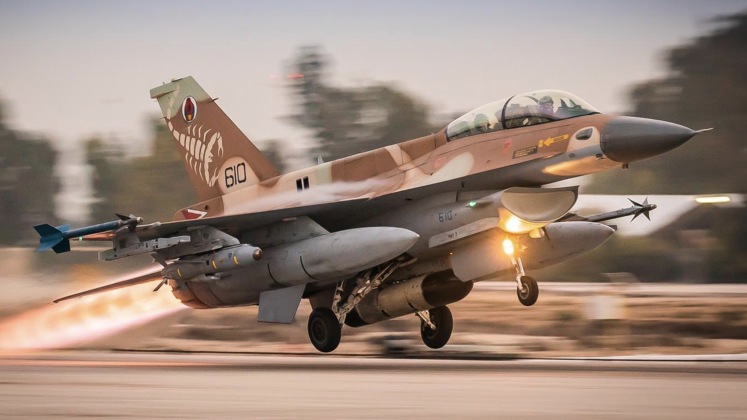
Israel was the first foreign client for the F-16, and famously used the aircraft to take out the Osirak nuclear reactor in Iraq in 1981 shortly after the aircraft entered service. The overthrow of the Iranian government in 1979, which had placed massive orders for F-16s as by far the class’ leading client, allowed more of production to be diverted to Israel and thus allowed the class to enter service more quickly. Israel had long sought to license produce F-16s as Turkey and South Korea did, with the intention of purchasing 50 complete aircraft from the United States before producing a further 150-200. By some estimates, Israel in the late 1970s planned to field 450 F-16s alongside 60 F-15s and 80 Kfir attack jets, although a lack of permission for license production meant this never materialised. Aside from political reservations, the F-16’s producer General Dynamics was reportedly concerned that Israel would reverse engineer the fighter as it had done with the French Mirage III, on which the Kfir had been based, to offer its own version for export. While the F-16 forms the backbone of the Israeli fleet today, the fighter’s diminishing standing in the Middle East, and issues with the F-35 which is also too costly for large scale purchases, has forced Israel to rely increasingly heavily on indigenous drone designs and on developing increasingly advanced air to surface missiles to compensate for the growing other limitations its fighters face.
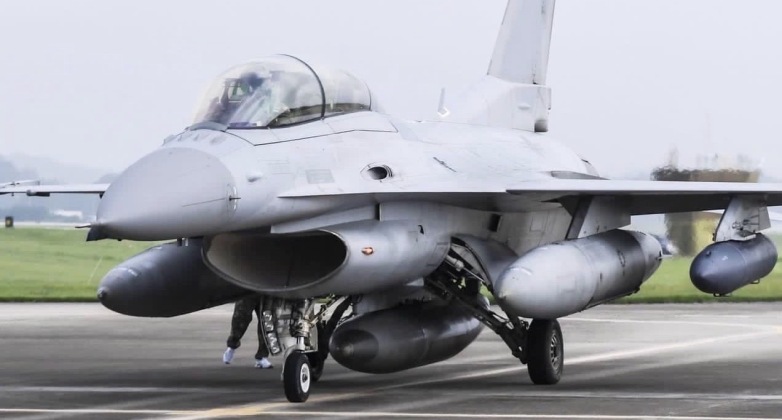
Republic of Korea Air Force: 161 F-16s
South Korea began to deploy F-16s in the 1980s, which at the time provided a comfortable performance edge over the MiG-21s of neighbouring North Korea and revolutionised the fleet’s capabilities. With 161 F-16s in service, the aircraft were produced in South Korea under license with significant local technology inputs – resulting in the aircraft being locally designated ‘KF-16s.’ The aircraft have recently been modernised to the F-16U standard, a Korean version of the internationally offered F-16V upgrade package, which has seen the aircraft integrate fifth generation level avionics including a new mission computer, entirely new cockpit displays and a new electronic warfare suite, as well as most significantly an AN/APG-83 active electronically scanned array (AESA) radar. This makes South Korean F-16s among the most capable in the world. Unlike other major F-16 operators, the Republic of Korea Air Force is not expected to phase its F-16s out of service for the foreseeable future, as its particularly large fighter fleet still flies many third generation fighters including an F-5 fleet more numerous than the F-16s. F-35 acquisitions by South Korea have thus been used to phase Vietnam War era F-4E fighters out of service, while the F-16s are expected to begin being phased out only in the 2030s when replaced by indigenous KF-21 stealth fighters. As likely the most capable NATO-compatible military other than the United States, South Korea is ensuring its F-16s remain at the cutting edge with the F-16U upgrade package, with enhanced F-16s gaining publicity when deployed to Australia to participate in Exercise Pitch Black 2022 in August that year.












